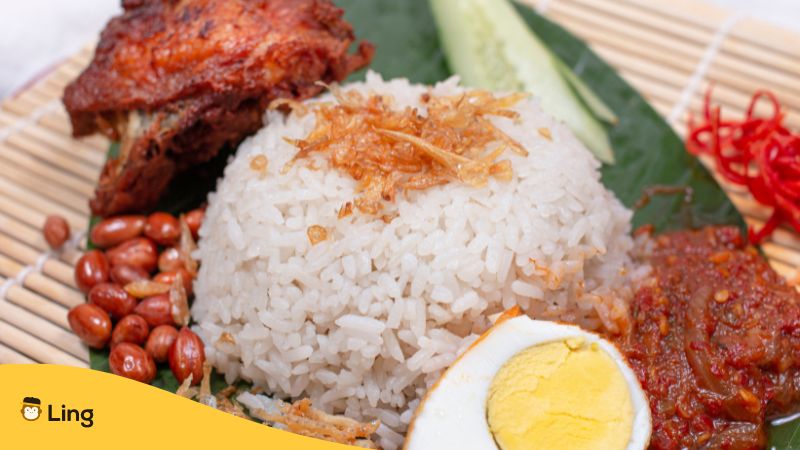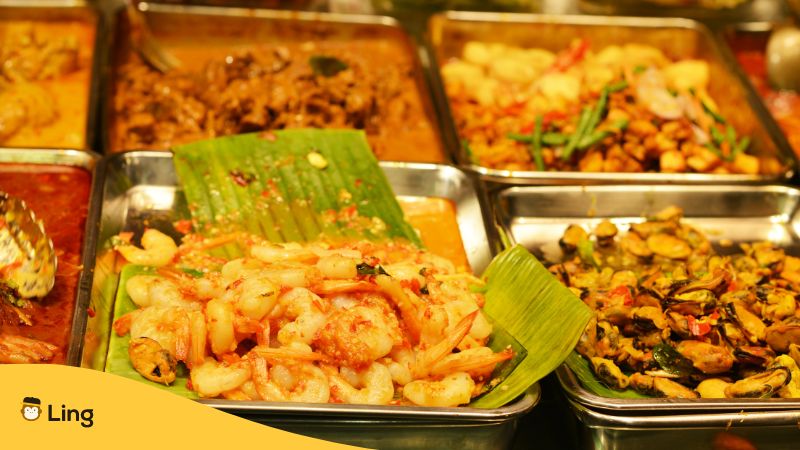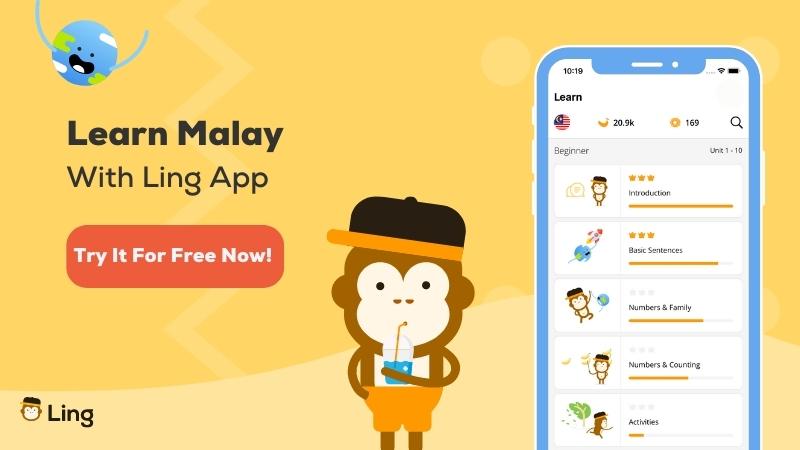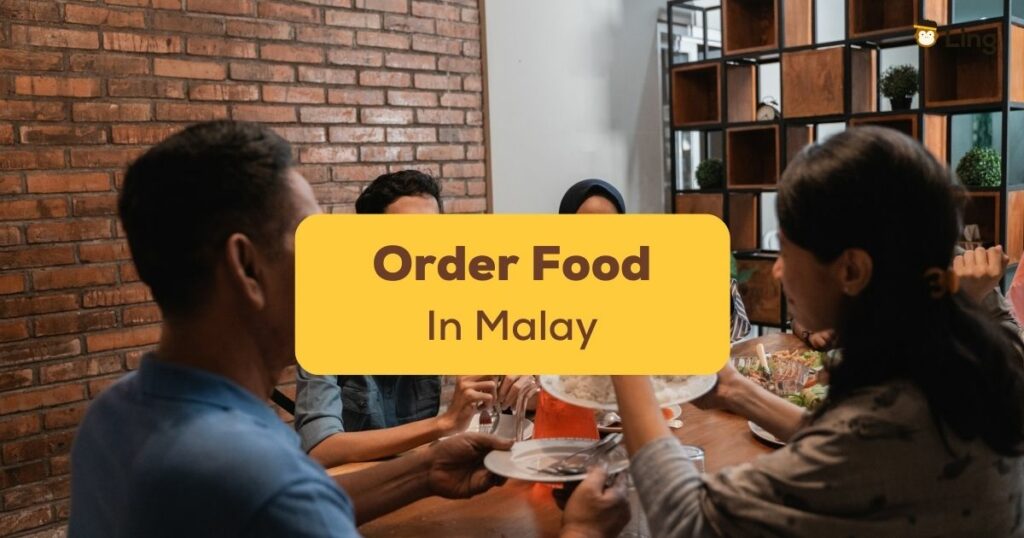Ordering food in the local language when you visit a new country is an experience everyone should have – especially when you’re going around the best food hawkers in Kuala Lumpur! That’s right, today we will learn how to order food in the Malaysian national language, Bahasa Melayu!
We’ll cover how to order food, ask for water in a restaurant, and the best dishes to try. It’s going to be great! If you’re ready to start talking all about makanan, read on!
Ordering Food In Malay – What You Need To Know
Ordering food can be one of the best experiences of visiting a foreign location. However, one should avoid assuming that everyone in Malaysia knows how to speak English – or that they even want to. When going into restaurants in Kuala Lumpur, or anywhere in Malaysia, there are some customs that we need to observe.
Understand The Menu
Malaysian cuisine is a wild ride. It is a melting pot of different cultures, with influences from Malay, Chinese, Indian, and Western cuisines. And while the food is absolutely delicious, people should understand that the menu may only sometimes be to your liking.
Here are some of the most popular food items you can find when visiting Malaysia:
Nasi Lemak

This is the national dish of Malaysia: the humble nasi lemak, a rice dish served with roasted peanuts, ikan bilis (anchovies), sambal (chili paste), and timun (cucumber) slices, topped with a nice yolky fried egg. Its name is two parts: nasi, meaning “rice”, and lemak, meaning “fat” – “fatty rice.”
It is cooked in coconut milk and pandan leaves, giving it a distinctive aroma. It is typically served with meat, usually fried chicken. However, people like tossing the rice along with the anchovies, spicy sambal, and nuts for a truly delightful experience.
Roti Canai
Roti canai is a staple flatbread in Malaysia’s food scene. It is a crunchy flatbread eaten as a side with many dishes, especially curries. However, it can also deliver the savory treat you need as a midnight snack!
Its origins can be traced back to when the British occupied the Malaysian peninsula, which led to an increased Indian presence in the country. From there, Malaysians have adopted the Indian paratha as their own, giving it a distinctive taste.
Nasi Goreng
Nasi goreng is the most uncomplicated food you can ever have in Malaysia and its neighboring countries, Indonesia and Singapore. It literally translates to just “fried rice.” And because it is such a simple dish, restaurants all over Malaysia alone have made multiple twists to this dish.
There’s nasi goreng mamak, with South Indian roots, the super-spicy nasi goreng kampung, and the mouth-watering nasi goreng ikan masin, fried rice served with dried fish. It is the perfect meal for any time of the day!
Mee Goreng
Mee goreng, or fried noodles, is another staple in the Malay diet. It is a fried noodle dish typically served with various toppings and seasonings. People believe its origins started from the fusion of Chinese and Indian influences – noodles and spices – creating a style of cooking unique to the region. Today, it’s a hit in hawker stalls!
Depending on where you eat it, there may be variations in how your mee goreng is served. It is always topped with crunchy veggies and eggs, but some regions use seafood as a topping, others chicken, and still others use beef. However, no matter how you eat it, it is always a treat!
Satay
This popular dish in restaurants and hawker stalls all over Malaysia and Indonesia is called satay. It is pieces of meat skewered on thin sticks, seasoned with spices, and served with a signature peanut sauce. When it comes to Malay food, this one takes the cake! Its origins are from the Middle East, brought by Arab and Indian traders to Southeast Asia.
People tend to have arguments over how it’s best eaten. Some regions prefer to have it as a snack or a starter for their meals, while others treat it as the main dish and have it with rice. Whichever way you swing on this issue, it is undeniable that ordering food in a Malaysian restaurant will only be complete with satay!
Be Prepared To Share Your Meal
In Malay-speaking countries, dining is, more often than not, a communal experience. When going to the best restaurants, for example, people order various dishes to share with the people they are dining with. So when you eat with a group at a restaurant, ask for different dishes for the group to try instead of ordering food for just yourself.
Be Sure To Ask For Help

Still trying to figure out what to do in a restaurant? Overwhelmed by the sheer amount of food choices? Which drinks will go with your mee goreng? Ask for help! People in Malay-speaking countries are helpful, especially if you’re polite and know essential phrases for ordering food. Here are some essential phrases to remember when ordering drinks or food in a restaurant:
| Malay | English | Sentence Example | Translation |
| Saya mahu <dish name> | I would like <dish name> | Saya mahu mee goreng! | I would like mee goreng! |
| Saya vegetarian | I am a vegetarian. | Saya vegetarian. Adakah pilihan tanpa daging? | I am a vegetarian. Do you have meatless options? |
| Berapa harga <dish name> | How much is <dish name>? | Berapa harga satay? | How much is the satay? |
| Saya mahu <drink name> | I would like <drink name> | Saya mahu sebotol Coke sejuk, sila. | I would like a cold Coke, please. |
| Saya mahu tambah <ingredient/side dish> | I would like to add <ingredient/side dish> | Saya mahu tambah sambal. | I would like to add sambal. |
| Saya mahu makan di <place> | I would like to eat at <place> | Saya mahu makan di pusat penjaja! | I would like to eat at the hawker center! |
| Saya mahu makan di sini/di luar | I would like to eat here/have it to go | Saya mahu makan di luar, sila. | I would like to have this to go, please. |
| Saya mahu cepat/lambat | I would like it fast/slow | Saya mahu cepat, sila. | I would like it fast, please. |
| Terima kasih | Thank you | Terima kasih, kami akan datang lagi! | Thank you, we’ll come again! |
Different Places, Different Food
If you want a truly Malay dining experience, prepare to visit the places where locals go: the pusat penjaja, or hawker stall. A combination of market and food festivals, hawker stalls form the core of Malay cuisine. These are open-air markets with various food stalls and a selection of tasty dishes at affordable prices. In addition, those who order a lot from a single vendor often get great deals, such as discounts or free samples!
If you want to discover an authentic Malay lunch, visit a hawker center. Otherwise, you can see a different restaurant every time you dine, as some will have unique dishes only they would have. For example, going to a coffee shop in a Malay country would likely get you some of the best kaya toast you’ll ever have! There are a lot of sweet treats, too, so make sure to watch your sugar intake.
As with many dining experiences, many popular restaurants might require you to wait a bit before sitting for lunch. Do not despair, however, because this is a sign without words: it just means that the food you’re going to get will be heavenly.

Key Words To Order Food In Malay
When you’re eating out, knowing a few helpful Malay words will help make your dining experience better. After this, you’ll know what a word means whenever you see it on the menu!
Check out this list of food words to make ordering them less of a stressful event:
| English | Malay |
| Rice | nasi |
| Noodles | mee |
| Chicken | ayam |
| Beef | daging |
| Fish | ikan |
| Soup | sup |
| Fried | goreng |
| Greased/fatty | lemak |

Learn Malay With The Ling App
Congratulations on making it through! We hope that this article has helped you grow an appreciation for Bahasa Melayu. If you want to learn more Malay phrases, the Ling app is here for you!
With lessons that cover the basics, from the Malay word for hungry (it’s lapar,) Ling app has you covered. Lessons in over 60 languages were crafted by teachers and native speakers for people at any stage of learning.
To get started, download the Ling App for iOS and Android today!



































































